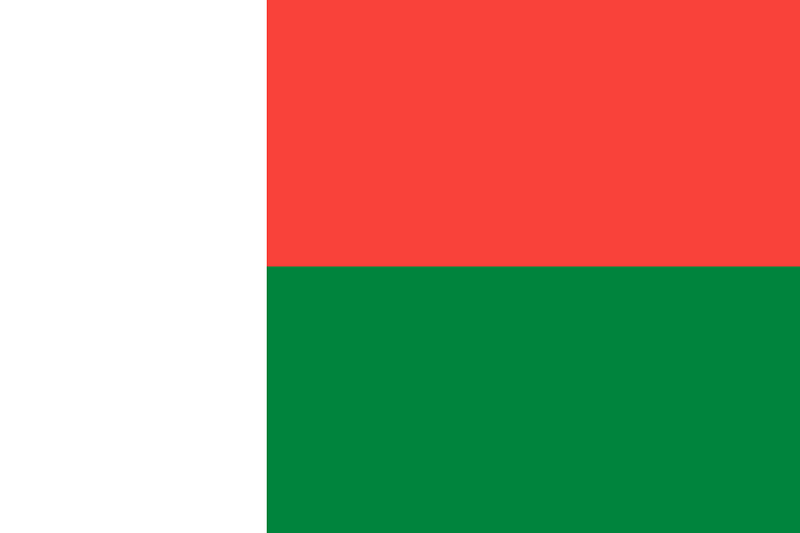This travel wiki page of Madagascar will help guide travelers with quick and relevant information to consider when planning and visiting the country. It is difficult to find all the relevant information on Madagascar culture, safety, travel restrictions, and things to do, so we summarize it all here. If anything is stale or outdated, please let us know! Let’s dive in and explore more high-level information as a Madagascar trip planner.
Last updated January 23rd of 2024.
Table of contents
National Information & Culture
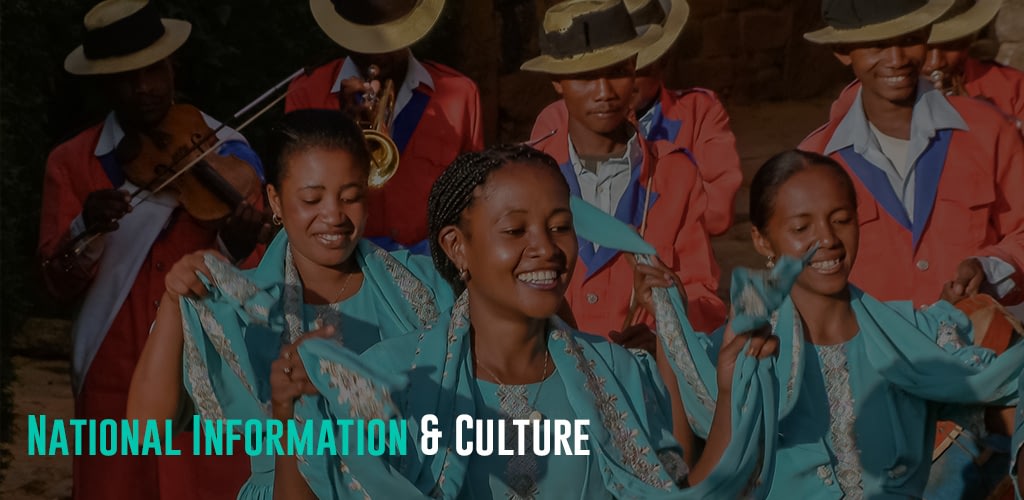
Madagascar, officially the Republic of Madagascar, is an island country in the middle of the Indian Ocean, on the southeastern coast of Africa. An isolated island country, Madagascar is the world’s fourth-largest island and the second-largest island country. It comprises the main island of Madagascar and numerous islands and cays. Its capital and largest city is Antananarivo, while the official currency is the Malagasy Ariary (MGA).
Madagascar is a megadiverse country and a biodiversity hotspot, with over 90% of its flora and fauna endemic. Furthermore, Madagascar is home to the world’s unique species, with nearly seven types of baobabs, 19,000 plant species, and over 100,000 animal species. Hence, Madagascar is a nature sanctuary and cradle of endemic species because of its outstanding riches.
Madagascan culture is a fusion of influences and origins from Asia (particularly Indonesians), Africa, Arabic, and French colonization. Despite being near the African continent, Madagascar’s population is primarily related not to African peoples but to those of Indonesia. For them, rice and zebu are symbols of Malagasy culture.
The Malagasy society has great respect for elders. Notably, only pick up the cutlery after the elder does during a meal. Also, be aware of fady or local taboos, which vary greatly by region.
Visit Madagascar’s official tourism website for more information and details when planning your trip.
Special Travel Considerations
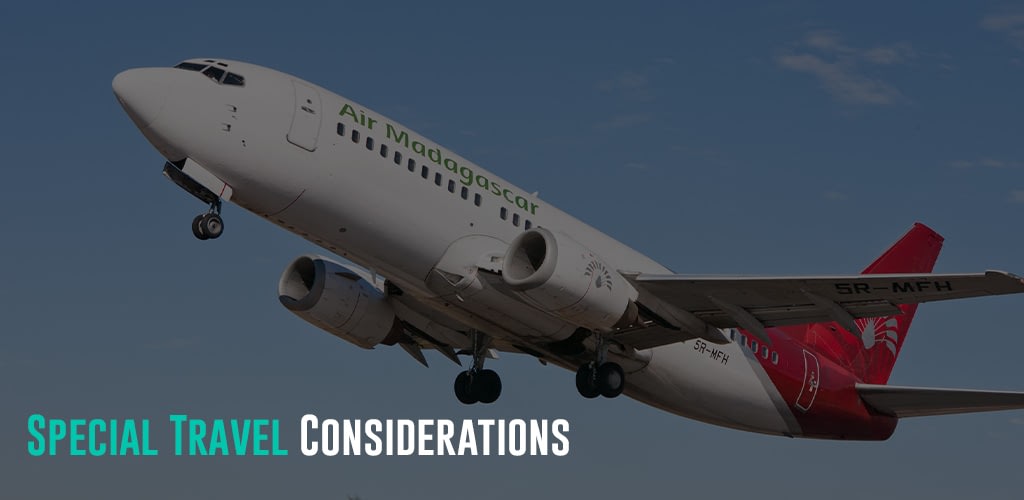
Each country and destination has rules and regulations that every traveler must consider. Hence, check the following considerations for hassle-free travel to Madagascar.
Covid-19 Protocol
Effective August 11, 2022, the government of Madagascar no longer has entry restrictions relative to the Covid-19 pandemic. Hence, Covid-19 testing and vaccinations are not necessary to enter Madagascar. However, the coronavirus policy may vary over time, and it is best to check Madagascar’s latest updates related to COVID-19 when planning a trip.
Travel Insurance
Travel and health insurance are not mandatory but highly recommended for visitors to Madagascar. Preferably, it must cover emergency medical treatment, including Covid-19, repatriation, and evacuation. Travel insurance can protect you against the inconvenience of injury, medical emergencies, theft, and flight cancellations. In addition, it is a comprehensive protection in case anything goes wrong with your trip.
Visa Information
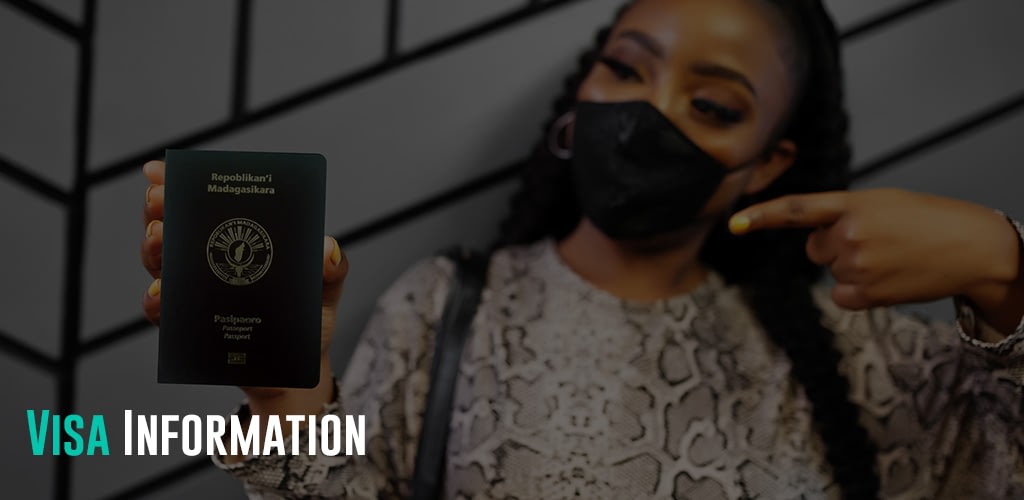
All tourists, except Palestinian nationals, can apply for an online visa (eVisa) or obtain a visa on arrival to Madagascar. The visa is for single entry for 15 to 60 days and is extendable up to 90 days. Processing of an eVisa application takes up to 3 days, subject to administrative and visa fees. Depending on the length of stay, eVisa fees range between $10 to $45.
In addition to a tourist visa, travelers to Madagascar must have proof of onward or return ticket and at least six months’ valid passport.
Popular Attractions
Madagascar is a biodiversity hotspot where flora and fauna are mostly endemic. Additionally, it is a raw and beautiful destination with a small crowd of tourists in a place with a rich and diverse ecosystem.
Avenue of the Baobab
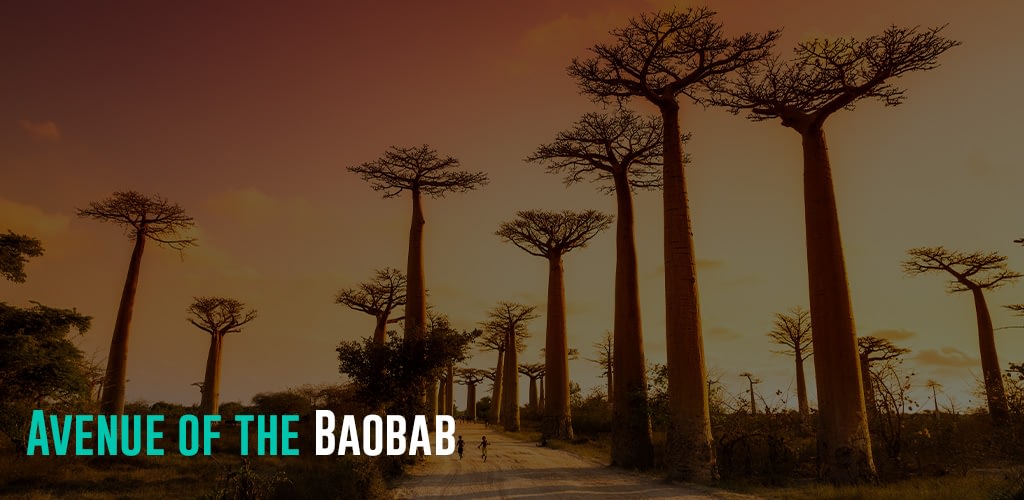
The Avenue of the Baobabs is a picturesque destination showcasing the country’s unique Grandidier’s baobabs located near Morondava in western Madagascar. This iconic stretch of Road No.8, spanning 19 km from Morondava, offers a mesmerizing experience, especially during sunrise or sunset when the warm light bathes the trees in a golden glow. The avenue is adorned with majestic baobabs, providing incredible photo opportunities and an unforgettable sight. Most of these over 800-year-old baobabs are a legacy of the island’s dense forests from centuries ago. In 2007, the Avenue of the Baobabs was classified as a “Natural Monument” and is now part of the 320 hectares protected area.
Travelers will also find the baobab Amoureux, also called baobabs of love, 7 kilometers further northwest of Baobab Avenue. These two majestic baobabs are twisted together and worth extra travel time. While Morondava is the ideal place to admire these ancient trees, they can also be seen in Majunga, Tulear, and the parks of Anakarafantsika, Vohibisa, and Kirindy Mitea.
Nosy Be
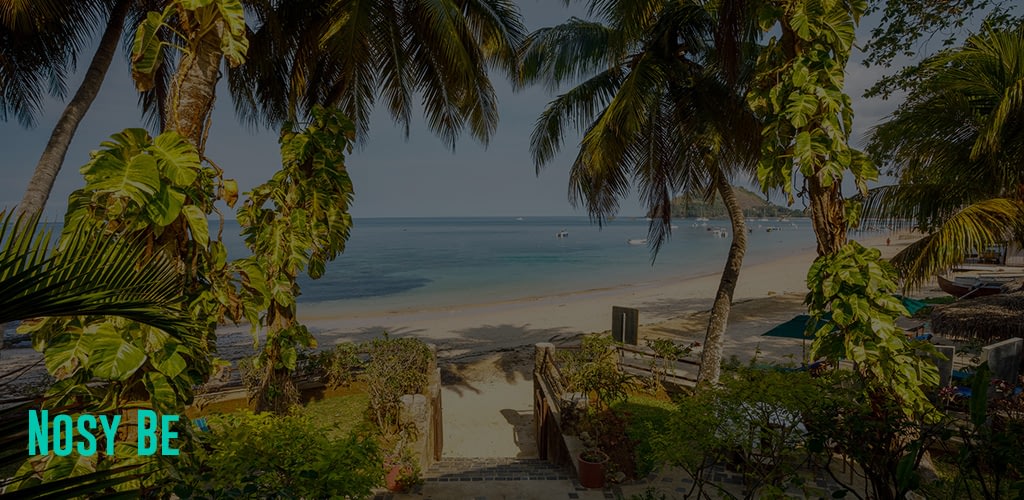
Nosy Be is Madagascar’s number one beach destination off the northwest coast. It is a tropical paradise known as the “island of perfumes,” featuring white sand beaches, turquoise waters, and lush forests, an ideal destination for sunbathing, swimming, and relaxation. In addition, the surrounding coral reefs provide scuba diving and snorkeling opportunities, with vibrant marine life, including colorful fish, sea turtles, and dolphins.
Nosy Be also boasts dense forests, volcanic lakes, and exceptional flora and fauna. It serves as a starting point for cruises to the archipelagos and the west coast of Madagascar. Moreover, the archipelago is famous for its aromatic spices, particularly ylang-ylang and vanilla. Visitors can explore plantations and enjoy the delightful scents and flavors.
For the best beach experience, travelers can visit Andilana, a long stretch of white sand and azure waters at the island’s northwest tip. It’s ideal for swimming, afternoon chill, and gorgeous sunsets.
Beyond its stunning beaches, Nosy Be is a full-fledged destination for nature lovers. The island of Nosy Komba, or Lemurs Island, is a habitat for lemurs and has hiking trails to wild nature and deserted beaches. Nosy Tanikely, a marine national park, offers exceptional marine life and scuba diving opportunities. Nosy Sakatia, or Orchid Island, has rich orchid vegetation that provides forest trails, diving, and dolphin encounters. The island also features tourist sites like the Nosy Be waterfall and Mont Passot, offering breathtaking panoramic views.
From June to September, travelers can have a unique experience of witnessing hundreds of humpback whales migrate off the northeast coasts of Madagascar for the mating season. Go on board in small groups and see the incredible mating dances of males for their females: jumps, strikes of fins, rises out of water. And if lucky, travelers can also witness the moving birth of a calf!
Royal Hill of Ambohimanga
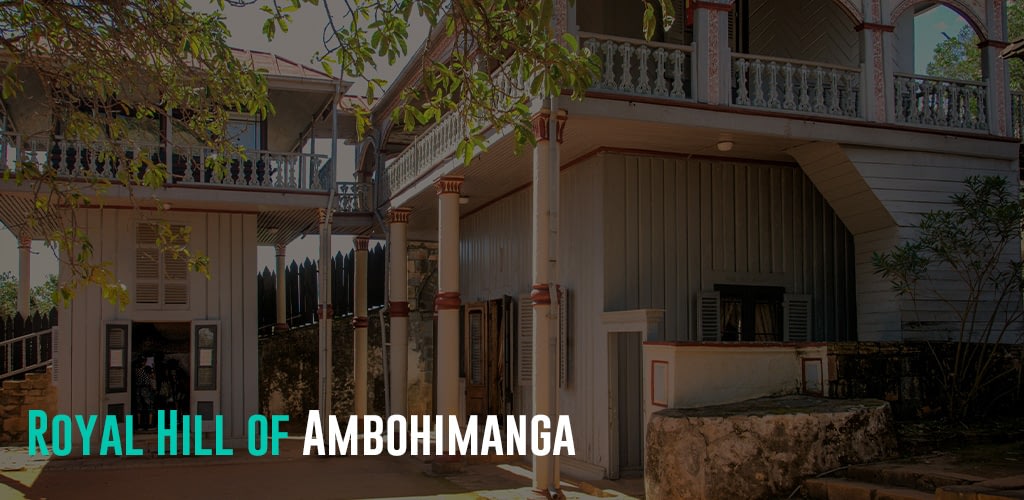
The Royal Hill of Ambohimanga, approximately 24 kilometers northeast of Antananarivo, has been the royal capital of the Merina Kingdom for approximately 500 years. The site is considered one of the holiest on the island. It is where King Andrianampoinimerina’s relics, such as weapons and drums, are preserved in a multifaceted area. Travelers will also find ancient royal palaces, tombs, and traditional houses that showcase the architectural heritage of the Merina people. Adding to its historical significance is the village’s protective wall, which dates back to 1847 and is made of unique materials like egg whites and lime.
Today, the Royal Hill remains a center for religious practices, drawing pilgrims and preserving cultural and spiritual traditions. Designated as a UNESCO World Heritage Site, the Royal Hill of Ambohimanga bears witness to Madagascar’s civilization from the 15th to 19th centuries. The site is a remarkable blend of historical, cultural, and natural elements, encompassing fortifications, palaces, sacred basins, and relics of a primary forest with endemic plant species.
Tsingy De Bemaraha National Park
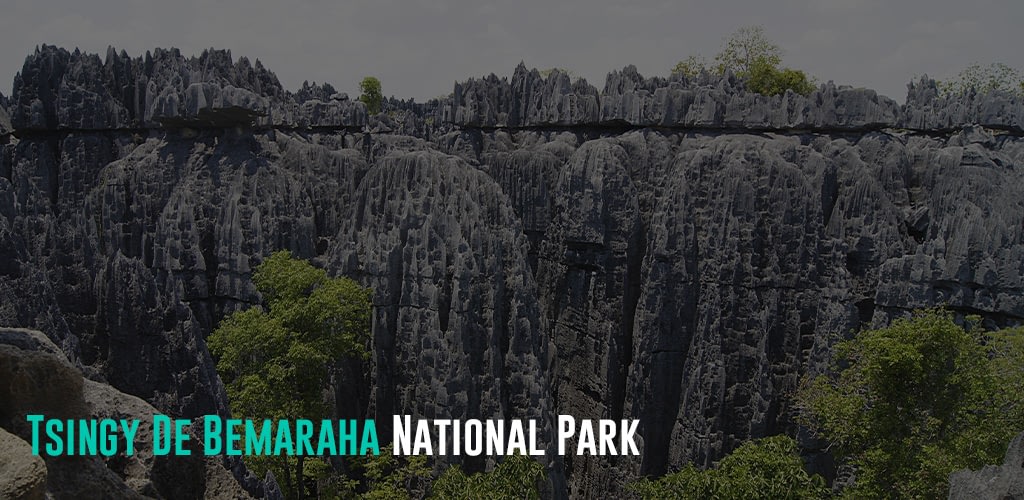
The Tsingy de Bemaraha National Park in western Madagascar is a captivating destination known for its unique karst limestone formations, creating an otherworldly landscape of towering pinnacles, deep canyons, and intricate stone forests. The formations of Tsingy fossilized shells are visible in various regions of Madagascar and are classified as a UNESCO World Heritage Site. It is part of the Bemaraha National Park, offering spectacular landscapes with sharp spikes, rifts, crevasses, and limestone blocks.
Millions of years ago, the region was beneath the sea, forming a massive limestone plate. However, erosion, rain, and temperature variations contributed to the creation of Tsingy’s unique landscapes.
Today, visiting Tsingy requires a mandatory guide to navigate the labyrinthine limestone cathedrals. The park also facilitates and organizes tours adapted to preferences and physical activity levels, including river journeys on the Tsiribihina and Manambolo, trekking, biking, and caving.
Isalo National Park
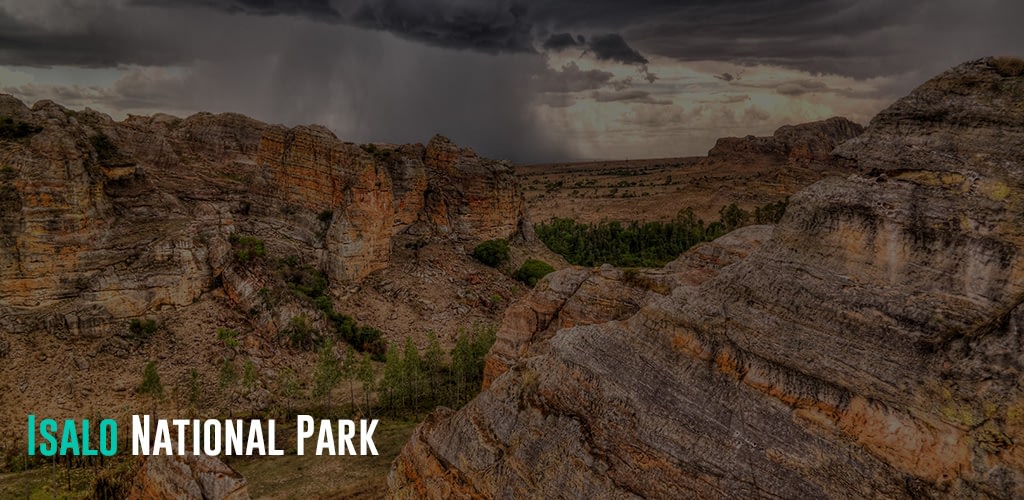
Isalo National Park, located in the southwestern part of Madagascar, is a must-visit gem offering stunning landscapes, unique rock formations, and diverse wildlife. The park features vast canyons, deep gorges, and oasis-like pools, with iconic sandstone rock formations providing a dramatic backdrop for hiking trails leading to breathtaking viewpoints and hidden waterfalls. The park also serves as an essential freshwater reservoir in the region.
Known for its rich flora and fauna, Isalo National Park is a habitat for numerous species, including aloes, pachypods, Bismarckia palm trees, and around 400 plant species. It is also home to seven lemur species, 80 bird species, Madagascar boa, Madagascar iguanas, chameleons, fossa, ring-tailed lemurs, Verreaux’ Sifakas, and the rare Benson’s rock thrush. Moreover, praying mantises are abundant in the savannah.
Referred to as the “Colorado of Madagascar,” Isalo National Park boasts diverse terrain and hiking routes. Exploration requires guides and can be done on foot or by off-road vehicles. Highlights include Tsingy d’Isalo, nymph waterfalls, Maki canyon, Portuguese grotto, and natural pools like “piscine naturelle,” “Piscine Noire,” and “Piscine bleu.”
Andasibe-Mantadia National Park
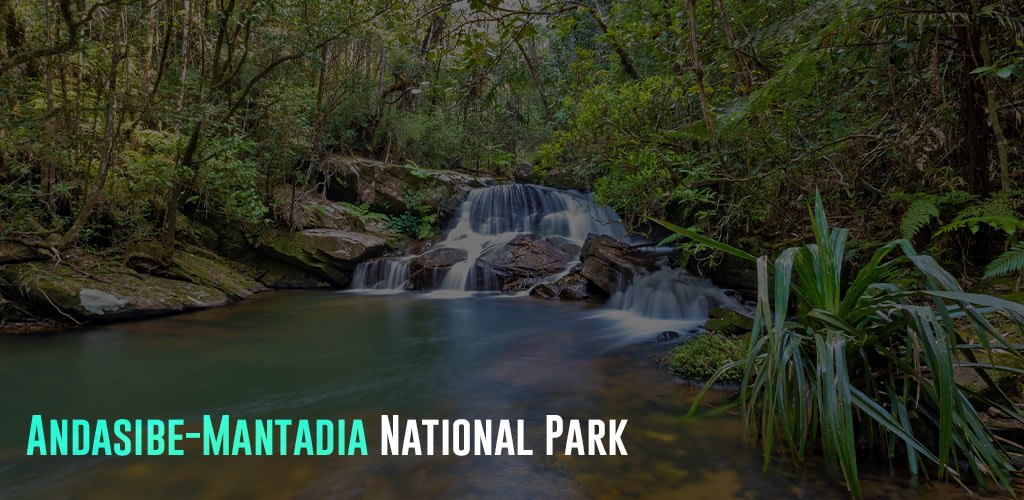
Andasibe-Mantadia National Park, a three-hour drive from Antananarivo, offers an exceptional forest experience for all ages. The park comprises two protected areas, the Analamazoatra Special Reserve and the Mantadia National Park, both primary forests untouched by human modification.
Andasibe-Mantadia is renowned for sheltering the largest lemur, the indri. Its cool climate also creates a lush habitat for various species of lemurs, birds, chameleons, and insects.
The park provides diverse activities, such as bird observation excursions, forest treks, and visits to natural pools and waterfalls. The five different circuits offer opportunities to explore the forest with giant ferns, numerous lianas, and various animals on the ground and in trees. Morning hikes allow visitors to hear the indris’ singing and witness their acrobatic leaps. Meanwhile, the night walks provide the chance to observe nocturnal creatures and enjoy the forest’s nighttime symphony to enhance the adventure. Accommodations are available in Andasibe, and camping is possible in the Analamazoatra reserve.
Ranomafana National Park
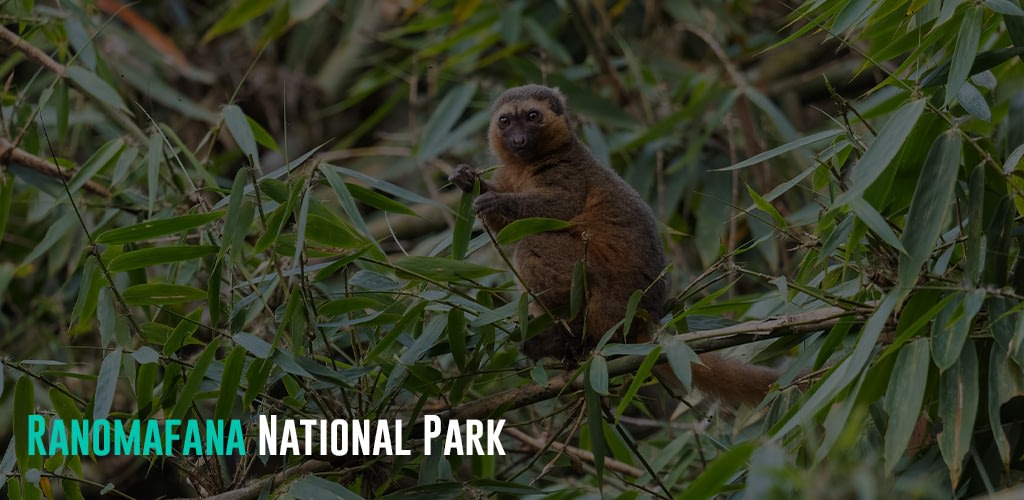
Ranomafana National Park, located near Fianarantsoa, covers approximately 41,600 ha of rainforest of exceptional biodiversity. A UNESCO World Heritage Site, the park features thermal springs and a diverse range of rare and endangered species, including 26 types of lemurs, numerous birds, butterflies, and unique plant species. Moreover, Ranomafana is home to the golden bamboo lemur, fossa, palm trees, ferns, and orchid species.
The park is surrounded by mountain ranges, providing opportunities for incredible hikes. Well-maintained trails lead visitors through cascading waterfalls, picturesque streams, and diverse plant life. Ranomafana National Park also offers various activities, such as visiting thermal baths known for their curative properties and exploring the Kelilalina Botanical Garden.
Today, organized tours with experienced guides are mandatory, providing insights into the ecosystem and conservation efforts. For a more immersive experience, staying in nearby eco-lodges and participating in night walks to observe nocturnal creatures is recommended.
Zahamena National Park
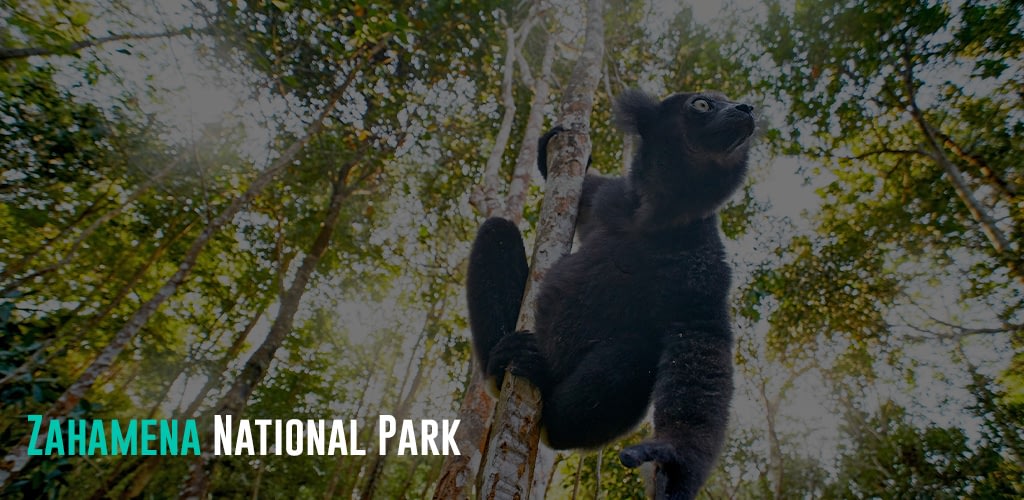
Zahamena National Park is a UNESCO World Heritage Site boasting rich and diverse flora and fauna in the eastern forests of Madagascar. With a unique climate of both maritime and terrestrial influences, the park showcases exceptional biodiversity with an almost 100% endemism rate. The park is home to 112 bird species, 46 reptile species, 62 amphibian species, and 48 mammal species, including 13 lemurs. Its lush vegetation also features orchids, epiphytes, and carnivorous plants, creating a stunning environment protected by local communities.
The park offers unique sightings, such as the rare Tyto Soumagnei, an owl-like bird found only in the eastern forests. Excursions, including the Bemoara circuit, provide opportunities to cool off in natural pools amidst refreshing oases. Inhabited by Betsimisaraka and Sihanak ethnic groups, Zahamena Park is a treasure trove for nature enthusiasts.
Primary Spoken Language(s)
Malagasy and French are the official languages of Madagascar. The Malagasy language, with numerous dialects, is widely spoken nationwide. French is a second language used by a quarter of the population. Meanwhile, English is considered the third language taught in Madagascar schools.
Safety Concerns
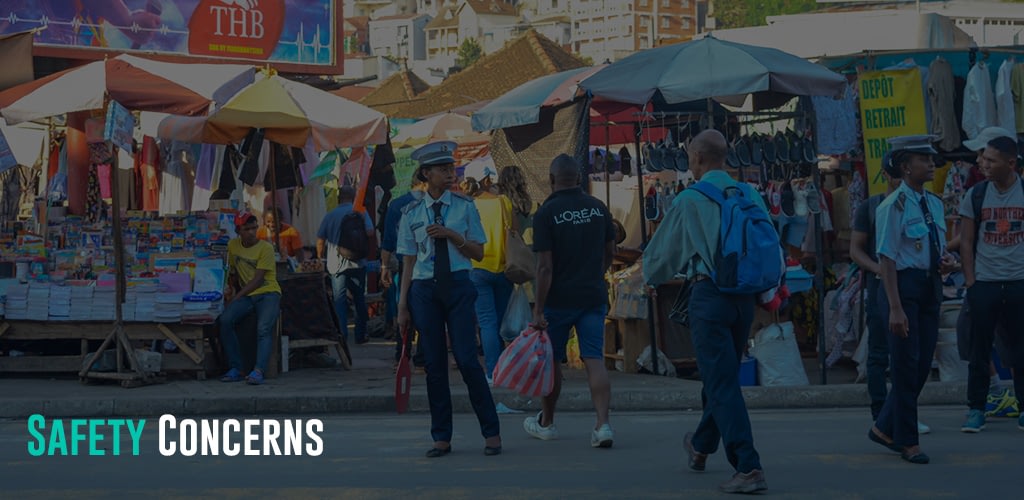
Madagascar is a relatively safe destination for travelers, ranking 56th out of 161 countries on the 2023 Global Peace Index, and has a Level 2 Travel Advisory from the US Department of State.
However, due to extreme poverty, petty theft and pickpocketing can be of concern, especially in urban areas and crowded markets. Hence, avoid flaunting wealth or valuables in large crowds and closely monitor belongings. It is advised to secure your wallet and phone at all times.
While criminal activities are primarily non-violent, armed robbery and assault can occur after dark. It can happen at tourist resorts, hotels, and vehicles traveling on main roads. Therefore, avoid late town arrivals and always have a destination when arriving at night. Use a hotel or a recognized tour operator for transport. Always close windows and lock doors, particularly in Antananarivo.
While most cities and towns are safe, travelers should avoid walking around Antananarivo or between cities at night. Certain areas may be prone to banditry. Areas with higher risk include Tsaratanana, the road connecting Tsiroanomandidy to Maintirano, and the vicinity of Betroka due to violent crime and banditry.
In an emergency, dial 117 from any mobile phone for assistance.
Natural Disasters
Madagascar experiences natural disasters and severe weather, including tropical cyclones and tsunamis. The cyclone season from December to April can damage properties, flash floods, and landslides, especially in eastern coastal regions. Being an island country, Madagascar may experience tsunamis caused by an undersea earthquake, landslide, or volcanic eruption.
Consider weather conditions when planning your travel to Madagascar. Stay up-to-date on weather forecasts, natural disaster watches, and warnings before and during your stay. Monitor local and regional weather from the Meteo Madagascar portal and plan accordingly.
Health and Vaccines
Below 2000 meters in Madagascar is a malaria zone, with heightened risk in crowded urban areas and coastal towns. Bubonic plague transmitted by infected fleas is also widespread, with a higher risk during the wet season (October to February). Meanwhile, dengue is a risk in northeast Madagascar (Antalaha and Sambava). Other prevalent and insect-borne diseases in Madagascar are plague, tuberculosis, Chikungunya, Rift Valley Fever, and Filariasis. Notably, there is an increased number of HIV/AIDS infections in Madagascar, and precautions should be considered.
Hence, ensure insect-proof accommodation and sleep under a good mosquito net to protect against insect-borne diseases. Travelers are also advised to use repellents and wear light-colored clothing. Lastly, consult a doctor for vaccinations and medications, particularly against malaria, cholera, and yellow fever.
Local Laws
The Government of Madagascar restricts the export of gemstones and vanilla for commercial purposes without a permit. Similarly, it is illegal to export certain animals and plants without approval. Lastly, sex tourism, or tourists engaging with sex workers, is also unlawful in Madagascar. Tourists can be punished, penalized, or imprisoned.
Budget Considerations
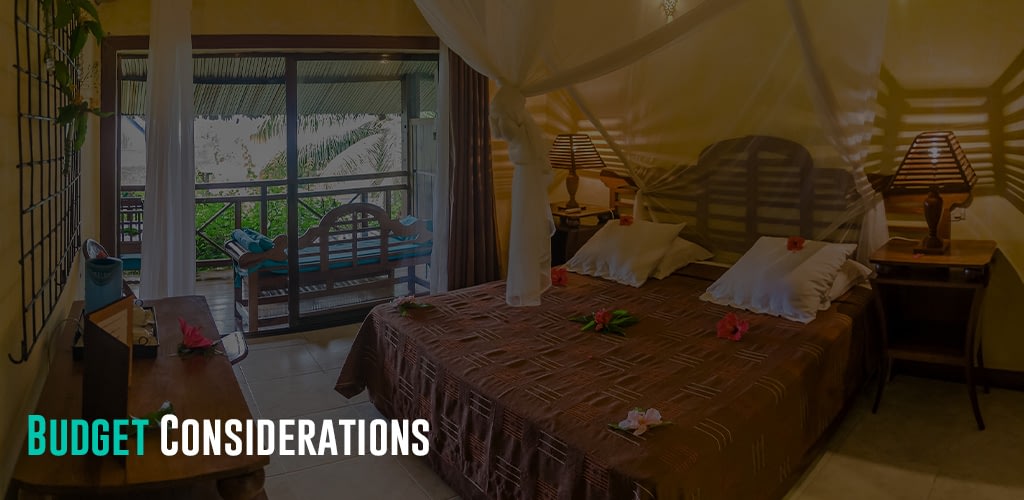
Madagascar is one of the world’s relatively affordable countries for travelers. Prices for hotels, transport, meals, and essential commodities are low and more comparable with Southeast Asia than with continental Africa.
Accommodation
Hostels are few in Madagascar, where a dorm bed starts at $8. But guest houses are plenty, starting at $11 for a private room in Antananarivo. Budget hotels cost around $20, a private room at Airbnb costs $12, and an entire home or apartment costs $33. Free wifi is standard, while some offer complimentary breakfast. For more comfort, visitors can stay in a three-star hotel for $30 per night and in luxury five-star hotels for $150. Meanwhile, travelers can find beachfront properties around Nosy Be for as low as $30 per night for a private room.
Food
Malagasy cuisine has French, African, Southeast Asian, and Middle Eastern influences. The food staples are rice, seafood, and zebu, with tomato, ginger, turmeric, garlic, and onion as common spices. The national dish, Zazu Romazava, is a must-try, which consists of small cubes of zebu meat served with rice, tomato sauce, and “light broth.
Must-try on-the-go foods are nem (spring rolls) and mofo (fritters), which are cheap, between $0.01 and $0.05. Dining for traditional cuisine at a casual sit-down restaurant costs $2, and a fast food combo meal at $4.40. Expect to pay around $5 in a mid-range restaurant and double the price in tourist places. Since food is cheap, cooking your food is unnecessary in Madagascar.
Attractions and Transportation
The cost of attractions and activities in Madagascar varies. While the beach is generally free, admission to national parks ranges between $4.80 and $14.30. Isalo National Park collects $14.20 for travelers, $12 in Tsingy, and $4.80 for Ranomafana National Park. Expect to pay $17.50 for the guide, whale-watching at $28.40, and diving at $40.
Public transportation in Madagascar costs as low as $0.25. Meanwhile, renting a car in Madagascar starts at $75.
Average Two-Week Cost
Backpackers in Madagascar can comfortably live with a $30 daily budget or $420 for two weeks. It covers the costs of staying in a hostel dorm bed, guest house, or Airbnb. The budget also includes dining in casual sit-in restaurants, taking public transportation, doing free activities on the beach, and hiking the free parks.
On the other hand, mid-range travelers spend $65 daily or $910 for two weeks. The budget includes three-star hotel accommodations, dining in a mid-range restaurant, riding a taxi, and doing a few guided tours.
Lastly, travelers can enjoy luxury in Madagascar from $200 daily to $2800 for two weeks. It includes staying in a five-star hotel and beachfront properties, dining anywhere, car hire, and availing all the paid tours and activities they want. So, for them, the sky is the limit for travel.
Customs And Import Restrictions
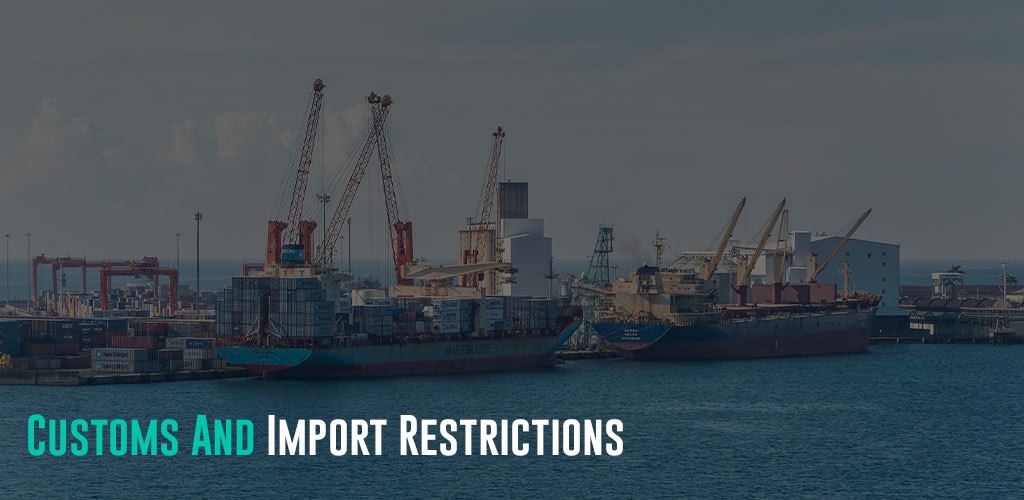
Travelers to Madagascar can bring goods and personal effects free from import duties and taxes. They may bring along goods not exceeding the following:
- 200 cigarettes, 25 cigars, 500 grams of tobacco, or a proportionate combination.
- 2 liters of alcoholic beverage
But note that alcohol and tobacco allowance exemptions do not apply to travelers under 21.
There are no restrictions on the number of foreign currencies a visitor can bring. However, travelers bringing over €7,500 (around $8,220) or its equivalent to foreign currency must declare such amount to Customs.
Furthermore, restrictions on some goods may require permits from pertinent authorities and an import or export permit. These include the following:
- plants, fruits, vegetables, and their by-products
- pets, animals, meat, and meat products
- Electronic equipment
Customs authorities in Madagascar prohibit the entry of the following goods and items:
- illegal drugs and narcotics
- weapons, explosives, ammunition, and deadly weapons
- endangered species of plant, live animals, and their products under CITES.
- counterfeit money and goods
- pornographic materials
For further information, please visit the IATA Center portal for the list of import and export restrictions in Madagascar.
Climate Considerations
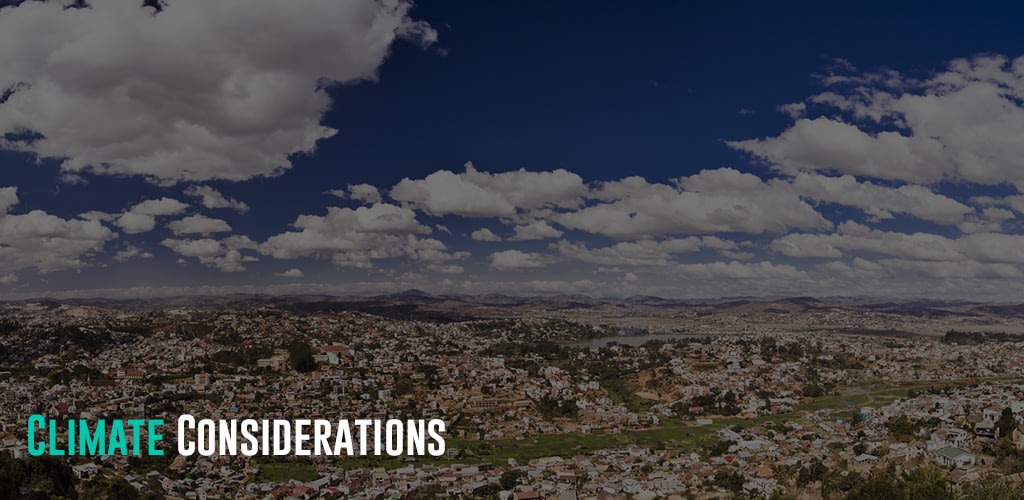
Madagascar has a generally subtropical climate. It has a distinct hot and rainy season during summer from November to March and a cool, dry season for winter between April and October.
However, there is a temperature variation depending on altitude and geographical location. The highlands have cooler temperatures. The west coast is warm and dry, while the east coast is rainy. On the other hand, the north has a hot and humid climate, while the south is a semi-arid region with less rainfall.
Antananarivo has a pleasant temperate climate, while along the coast, it has higher temperatures, between 27°C and 32°C in the wet season and 18°C to 22°C in the dry season. Do not forget to bring rain gear when traveling to the east, as heavy rainfall occurs anytime.
With its location in the Southwestern Indian Ocean, Madagascar is exposed to tropical cyclones. Notably, November to April is the cyclone season in Madagascar.
Primary Transportation Options
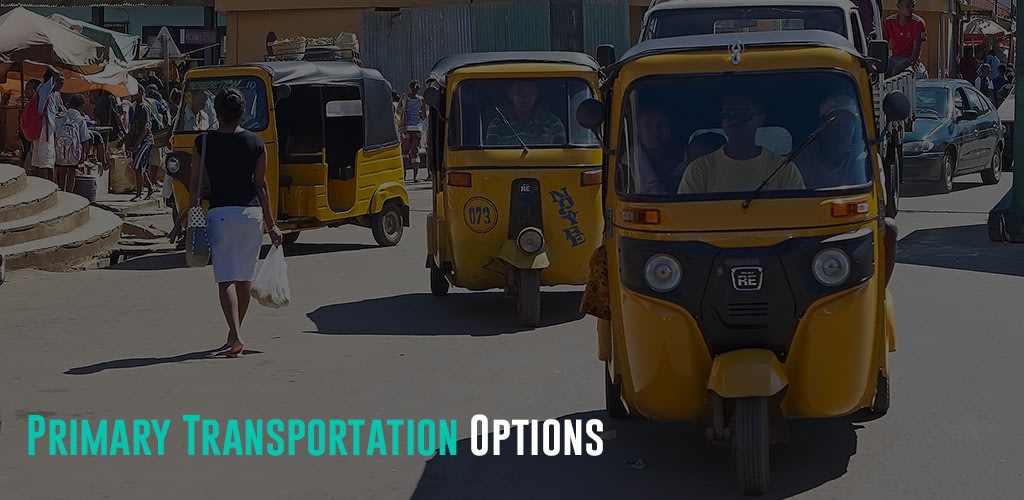
Generally, joining organized tours is the most common way for tourists to visit and explore the natural beauty of Madagascar. The country’s transport network is less developed, with limited international flight connections worldwide. Nonetheless, Madagascar has domestic airports strategically located nationwide. Its aerial routes are a good option for travelers to discover all the treasured destinations without passing through poor road conditions.
Air
Ivato International Airport in Antananarivo is the country’s aviation hub and primary entry point for tourists to Madagascar. In addition, Fascene International Airport in Nosy Be receives frequent international charter flights, apart from its regular scheduled flights.
Air Madagascar, the country’s flag carrier, flies regular international routes to Paris, Johannesburg, and Bangkok. It also operates domestic flights nationwide, along with its affiliate, Tsaradia Airlines.
Other significant carriers flying into Madagascar are Air France from Paris, South African Airways and Airlink from Johannesburg, and Kenya Airways from Nairobi. Meanwhile, Air Austral (Réunion), Air Mauritius, Air Seychelles, and Comoros Aviation provide regional connections around Madagascar.
Rail
Madarail, or Madagascar Railways, manages the only train operations in Madagascar. As of 2023, the train services between Moramanga and Ambila Lemaitso usually take around 9 hours for a 155-kilometer distance. Also, delays are frequently possible because of poorly maintained rail lines and older train carriages.
Car
Aside from joining organized tours, car rental is one of the best options to explore and get around Madagascar. Local rental companies offer vehicle rental with a driver for around $75 daily, depending on the car type and model. Notably, the roads in Madagascar are narrow and mostly in poor condition. Hence, having a local driver is highly recommended as it is also uncommon to find vehicle hire services without a driver in Madagascar.
Public Transport
Madagascar offers various means of local transport, both within and outside cities, allowing travelers to explore the island’s diverse landscapes and immerse themselves in the local culture. Exploring Madagascar through public transportation also provides an authentic experience, although conditions and options may vary, and negotiations are typical for certain services.
Taxi
Cream-colored taxis recognizable by lanterns are generally available in Antananarivo. However, they do not have meters or fixed rates. Hence, negotiate the price before getting in.
Taxis can also be rented for city tours or a specific journey outside town. But ad hoc arrangments for longer rides should clarify the destination, distance, fuel responsibility, and, most significantly, the price.
Aside from regular taxi cabs (4L taxis), taxi motors or motorcycle taxis are becoming popular in Madagascar. These are ideal for individual travelers with less or no luggage at all.
Bush Taxi
Bush taxis, also called taxi brousse, are shared taxis or collective minibusses that run regular inter-town services in Madagascar. These are available in dedicated stations in each town and only leave when full. Bush taxis can be airconditioned or non-airconditioned, and fares vary by route, passenger volumes, and comfort level.
Tri-shaw
For short journeys, travelers can get around in Madagascar by motorcycle trishaw (tuk-tuks), cyclo-pousse (cycle rickshaws), and pousses-pousse (car towed by a person). Short rides cost between $0.25 and $1.25, depending on the vehicle, distance, and town.
Start Trip Planning
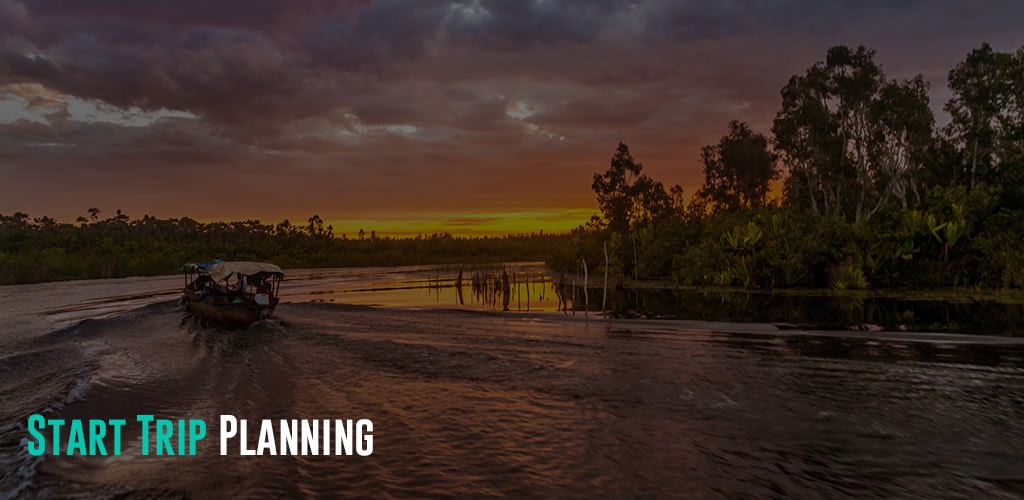
Travel-Wise is made from the ground up to help people travel more, break down the barriers that make it tough to get going, and start your journey as painlessly as possible. Bookmark our other Country Guides to help kick-start your research for future travels. We also offer templated itineraries from our staff and community that help serve as a building block for your trip plans. Alternatively, we also utilize AI to offer a way to generate itinerary ideas. This saves much time just getting you up and running with a template. From there, you can use the trip planner to create your customized itinerary, invite friends and family for collaboration, find others from Travel-Wise to join the trip, book and track important information, journal, and share your experiences at the end or along the way!

